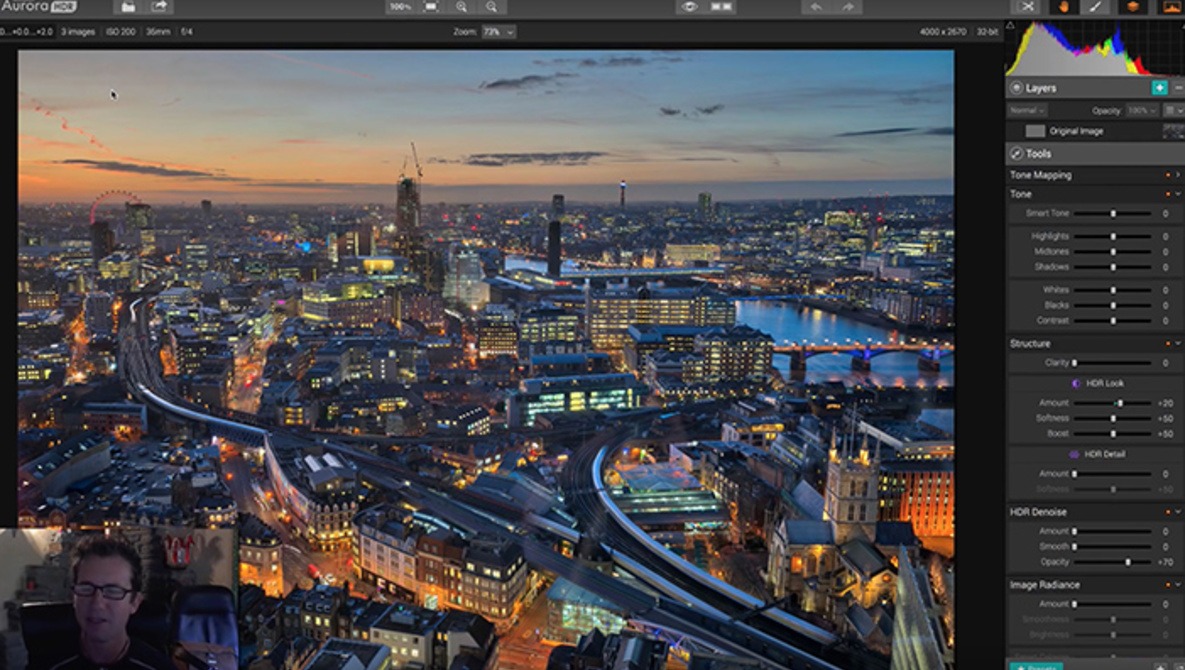
The main drawback with batch processing in Aurora HDR 2017 is that your editing options are limited to applying presets and a handful of other checkboxes on the processing screen. Batch processing appears on the startup screen and gives you the option of selecting individual images or folders containing bracketed exposures. Fortunately, it’s present in Aurora HDR 2017. Luminosity Masking is, in my opinion, the defining feature of this application - not because it is a concept unique to Aurora HDR, but because Aurora HDR is resoundingly successful at making the process both easy and effective.īatch processing is a feature that many users look for in prospective photo editing software. This powerful feature creates 11 different brightness zones within an image you then select a zone to mask, which allows for highly selective edits within only that zone (you can select multiple zones if you wish). Luminosity Masking in Aurora HDR is modeled after the zone system commonly associated with the work of Ansel Adams. In addition to the Gradient Mask and Radial Gradient Mask, you can also apply a Luminosity Mask. Top & Bottom Adjustment gives users ultimate control over exposure, contrast, vibrance and warmth within each section (top or bottom) of the chosen gradient mask.ĭirectly beneath the histogram resides the Layers panel, where you can add or remove an adjustment layer or texture layer you can also merge additional images from a bracketed exposure series.įurthermore, you can assign individual masks to each layer. Top & Bottom Adjustment – Aurora HDR 2017 features Gradient and Radial Gradient masks, each of which functions much like what you’ll find in Lightroom.Keeping the “HDR Look” slider set to zero produces the most natural looking HDR image possible. This technique creates an HDR “look.”In Aurora HDR 2017, the Tone Mapping tools allow you to make adjustments specifically to a set of merged images. HDR Tone Mapping – Tone mapping is a process of manipulating tonal values (converting them from a high range to a lower range) and presenting them in a way that looks good on screen or on paper.There is great potential here, but your mileage may vary. Posterization was less problematic when working with a single image. It’s a great idea that works decently for some images and poorly for others.For instance, the filter has a tendency to posterize blue skies, though in my experience this mostly applied to bracketed images. Polarizing Filter – Yes, this tool seeks to function just like the filter you would screw onto a lens.

In addition to basic image adjustments (exposure, contrast, color temperature, clarity, etc.), users are treated to a host of HDR-specific tools designed to help you fine-tune your work. So some extent, there's not really a price you can pay for these? Tools of the Trade In short, everything in Aurora HDR’s working environment is logically arranged, comfortably spaced and easily accessible. You can save your favorites, create and save your own presets or buy more presets from the Macphun website. Aurora HDR ships with 9 different preset categories (Basic, Realistic HDR, Landscape, etc.) with most categories containing between 9 and 11 individual presets.

The top right corner houses an ever-present histogram all the adjustment sliders that you will need to enhance your image are available just beneath the histogram along the right side of the screen.Īlong the bottom of the screen, you will find Presets.

The right side of the interface is where all the goodies reside. Along the top of the screen, you will see basic exif info, a crop tool and display options. Once your image is loaded, you'll find the overall look of the interface is rather familiar. Simply select the image or images you wish to edit and Aurora HDR will import them into the workspace.
#MACFUN SOFTWARE HDR REVIEW SERIES#
No matter how you choose to launch it, you have the option of working with a single image or a series of bracketed exposures. First Up – the User InterfaceĮase of use is, once again, the order of the day Aurora HDR provides users of all skill levels with an intuitive, user-friendly, spacious setup.Īurora HDR 2017 can be used as a standalone application or as a plug-in for Photoshop, Photoshop Elements, Lightroom, Aperture and Photos.
#MACFUN SOFTWARE HDR REVIEW SKIN#
This was not, however, the company’s first foray into image editing software, having already established themselves with more specialized applications like Snapheal (for removing unwanted objects and fixing skin imperfections) and Aurora HDR (for HDR processing), the latter of which has been updated and is the focus of this review. In late 2016 Macphun introduced Luminar, a well crafted, comprehensive and powerful all-in-one photo editing suite. Let's begin with my overall assessment of this piece of software and then below I'll simply explain my reasoning behind these scores. HDR Made Easy? Yes Please – Aurora HDR 2017, Reviewed


 0 kommentar(er)
0 kommentar(er)
